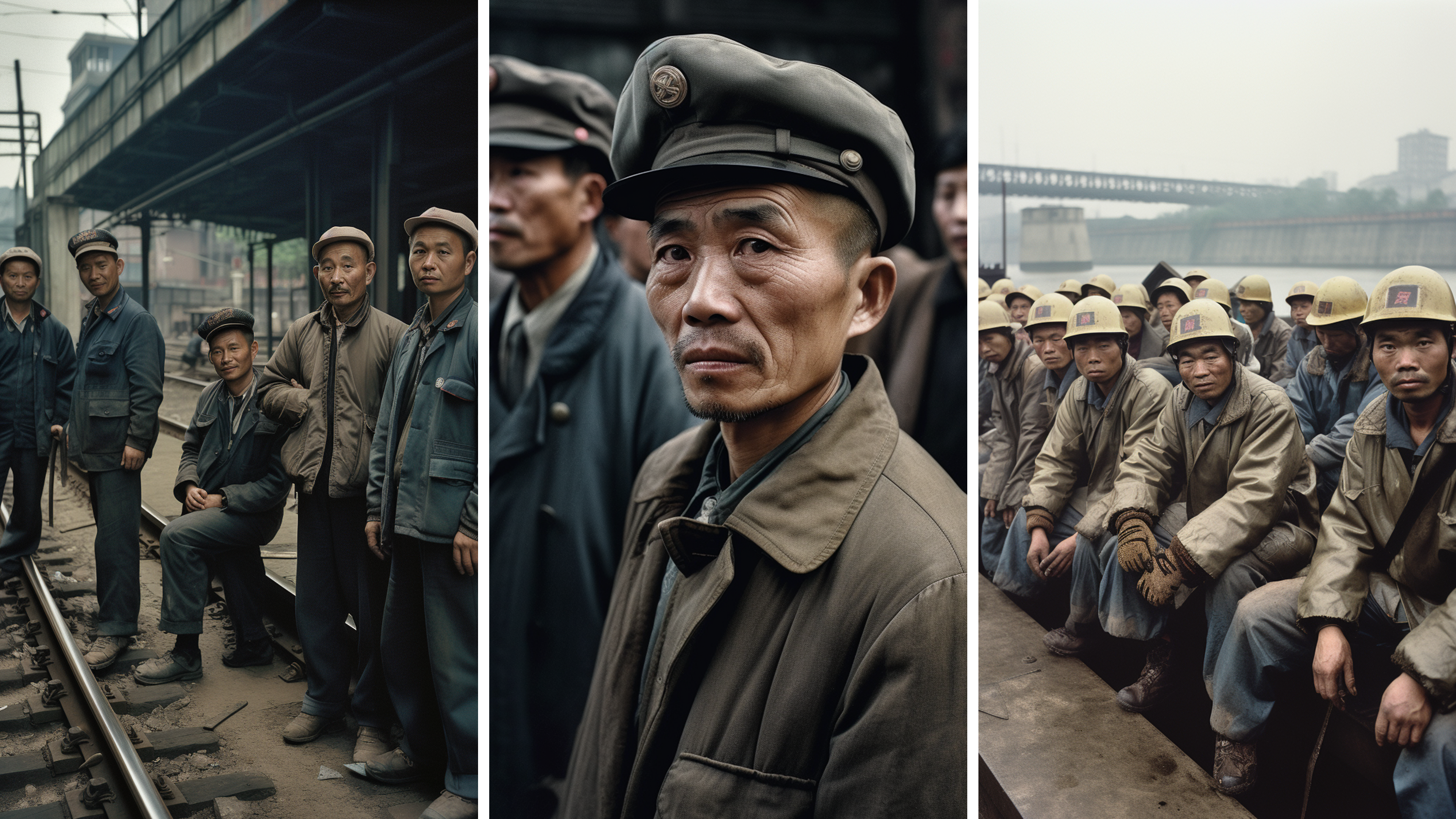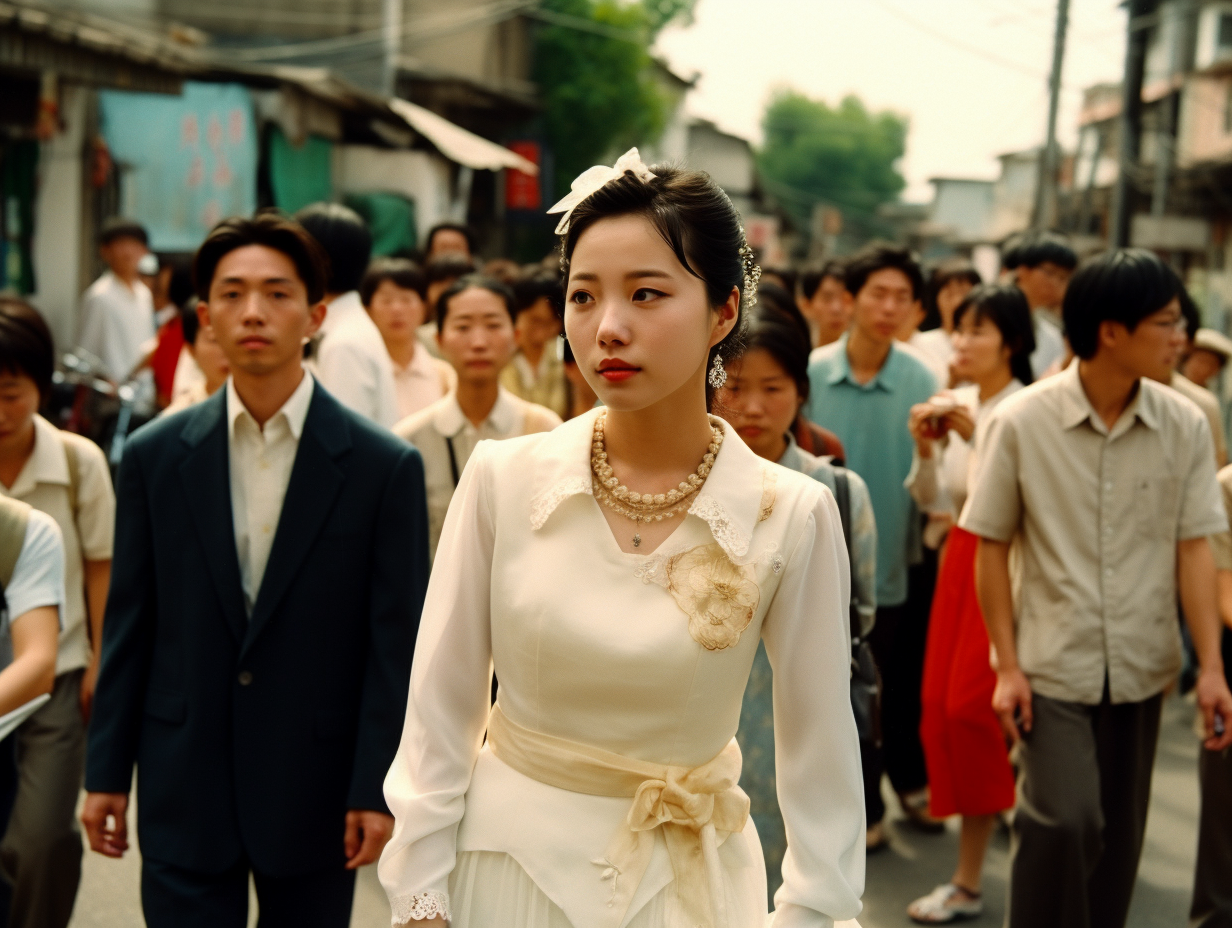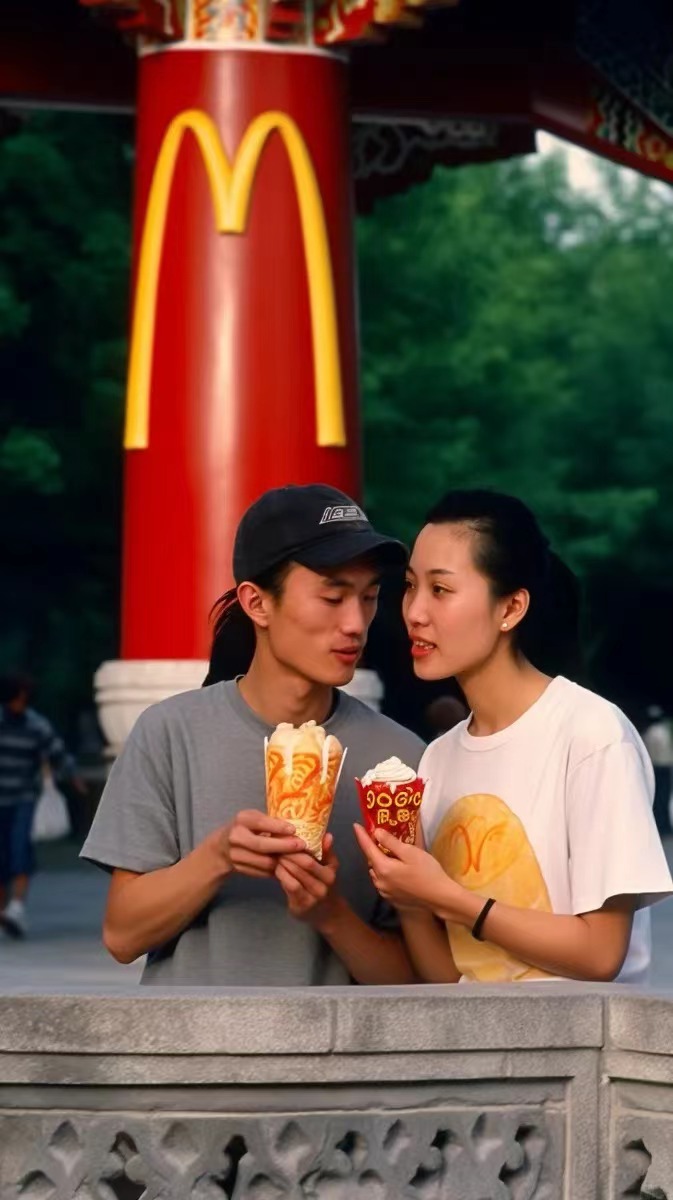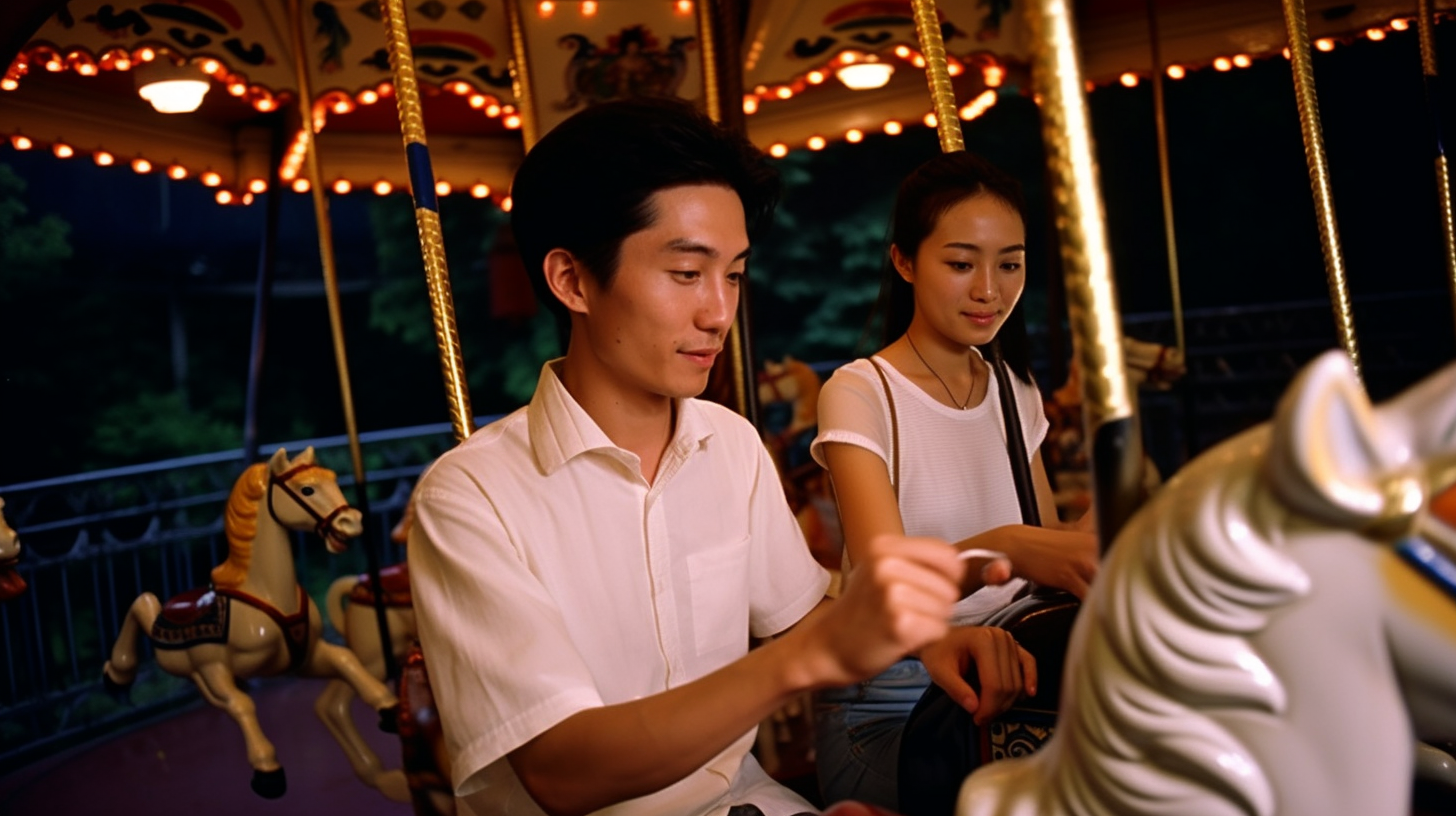China Report is MIT Technology Review’s newsletter about technology developments in China. Sign up to receive it in your inbox every Tuesday.
Welcome back to China Report!
If you saw these images pop up on your timeline, would you be able to tell if they were real photographs of the southwestern city of Chongqing in the 1990s?

In fact, none of them are real. Zhang Haijun, a street photographer in Chongqing, generated these images with Midjourney, an image-making artificial-intelligence program.
A number of artists and creators are generating nostalgic photographs of China with the help of AI. Even though these images still get some details wrong, like the number of fingers that humans have or what Chinese characters look like, they are realistic enough to trick and impress many social media followers, including me.
Retro AI artwork like Zhang’s has also caught the attention of Tong Bingxue, a collector of Chinese historical photographs. He reposted some of them to his popular Twitter account China in Pictures last week.
These generated photos are indeed aesthetically pleasing, Tong says. They look sophisticated in terms of standard photography metrics, like definition, sharpness, saturation, and color tone. “When people look at things on social media, these [attributes] are the first things that catch the eye. The authenticity of the photo comes second,” he says. Real historical photos, on the other hand, sometimes look amateur or come with material imperfections.
Zhang, the creator of the AI images above, was born in Chongqing in 1992. He grew up near the Chongqing Iron and Steel Company, one of the oldest and largest steel factories in China, and remembers watching the workers when he was about seven years old. “When I was little, I would often watch them come out of the factory during their break, sit on the ground, smoke a cigarette, and look into the distance. There were stories in their eyes,” he says.
When he turned that experience into an image-generating prompt for Midjourney, he was amazed by the results. “What the AI generated—the look of resilience in their eyes and the way they are dressed—it looks exactly the same as what I described to it,” he says.
Now, Zhang pays more than $200 a year for Midjourney, and uses it to generate new retro photographs with different themes: rural weddings in the ’90s, physical laborers for hire waiting in the market, and Chongqing street fashion. Each time, he writes the prompts in Chinese, uses machine translation tools to convert them to English, feeds them into Midjourney, and spends about 20 minutes tweaking them to get the ideal result.

Some artists working with AI are inspired by the discovery of real photos. Diaspora youth in the West have been forming communities on Instagram where they crowdsource and curate historical photos in order to rebuild memories free from a Western framing.
Kim Wang, a 28-year-old UI designer and photographer in Hangzhou, was inspired by Beijing Silvermine, a project by the French artist Thomas Sauvin, who rescued 850,000 discarded color negatives, dating from around 1985, from a recycling factory in Beijing.
She used Midjourney to create photos of China in the 1980s and ’90s.
“For our generation, I feel like there’s a massive leap from 1995 to 2023,” says Wang. “Now is a completely different era, but I kind of want to go back to that era.” In particular, she wanted to re-create what Hangzhou looked like before it became a tech hub and home to multiple Chinese tech companies, including Alibaba, Hikvision, and NetEase. “I want to restore it to the era when it was not so involuted,” she says, using a word that has become popular in recent years to describe the widespread feeling of burnout in China.

In one photo she generated, a young couple are sharing fast food by Hangzhou’s famous West Lake. She wanted the McDonald’s logo to appear on the packaging of the soft-serve ice cream. Instead, Midjourney placed the logo on a crimson-colored traditional Chinese pillar, giving it a surprising twist. Wang liked the accidental result and decided to post this picture along with seven others on the social media app Xiaohongshu, where she got nearly 9,000 likes.
These AI-generated photos are making waves right now mostly because of a recent major update of Midjourney that was released in mid-March. Wang says the new version, Version 5, is better not only at generating human hands but also at simulating various photography styles. In the previous version, generated photographs often look like illustrations because of incorrect lighting. The same new version of Midjourney is also behind a few AI images that have gone viral in the past week, including some featuring a fashionable pope and others purporting to show Donald Trump being arrested.
Another important upgrade with the new version, according to Wang, is that the software has started to move beyond rendering stereotypes of Asian faces. “The photographs generated by Version 4,” she says, “looked more like the model faces that would appear in Western fashion advertisements: almond eyes, slit eyes, and monolids.”
Even so, it’s still relatively easy even for untrained eyes to tell that the photos are generated by an AI (in the photograph of the bride above, for example, the woman behind in red pants is missing a leg).

As with other applications of Midjourney or other similar AI tools, there are concerns about intellectual-property theft, because the software mimics the styles of certain artists, often without permission or credit.
“It steals data from photographers and uses it to make money or send messages in ways they don’t necessarily support,” Rui Zhong, a policy researcher and artist, commented under a tweet by Tong Bingxue showing the AI-generated retro photo of Chongqing. On Chinese social media, the recent popularity of image-making AIs has set some illustrators on high alert, and they are going around looking for and exposing AI-generated artwork that wasn’t properly labeled.
Tong says the retro images don’t have much value outside of being pleasing to the eye. “The most important attribute of a historical photo is its archival value. Its sharpness, color tone, artistic value—these are all secondary,” he says.
There are things to learn from old photos, he says—not just about the subject of the image, but also from what can be seen in the background, details that could have been captured just by accident. The photographs themselves are artifacts too: they’re material media, whether silver film, glass negatives, or pieces of paper, and they document their own trip through time. AI retro photography, by contrast, offers nothing more than a good-looking image.
Do you think AI-generated nostalgic photographs will be good or bad for the photography profession? Let me know your thoughts at zeyi@technologyreview.com.
Catch up with China
1. TikTok CEO Shou Zi Chew was grilled by US House lawmakers for five hours on Thursday about the app, which has raised concerns over national security and the mental health of teenagers. (Washington Post $)
- Meanwhile, TikTok paid a group of influencers on its platform to come to Washington, DC, and advocate against banning the app that has made their careers. (New York Times $)
- Hours before the meeting, China’s Commerce Ministry said it strongly opposes a sale of TikTok. Any deal that involves transferring technology outside the country would require government approval. (Wall Street Journal $)
- Perhaps the most unexpected result is how Chew himself became a social media darling for his good looks and calm demeanor during the hearing. (Insider $)
2. Satellite images show the origin and route of the Chinese high-altitude balloon that flew over the US and grabbed the whole country’s attention in early February. (New York Times $)
3. To boost the marriage rate and address population decline, one city in China launched a matchmaking platform, using data on single residents. (The Guardian)
4. Top US corporate executives, including Apple CEO Tim Cook, attended a business meeting in Beijing over the weekend and met with Chinese officials. (Wall Street Journal $)
5. After rejecting Western mRNA vaccines for over two years, China finally approved its first homegrown mRNA vaccine for covid last week. (BBC)
6. Nvidia modified H100, one of its flagship chips, in order to continue to be able to sell it to Chinese companies without triggering US export controls. (Reuters $)
7. Seventy-three years before the 2022 Nobel Prize in Physics was awarded to three scientists who worked on quantum entanglement, it was Chien-Shiung Wu, a Chinese-American physicist, who conducted the first experiment to document evidence of entanglement in photons. (Scientific American)
Lost in translation
In China, cyberbullying is still claiming lives.
After the suicide of a Chinese woman who was cyberbullied last year for dying her hair pink, a group of college students at Fudan University’s Fushu data journalism lab set out to gather data illustrating the severity of online harassment in China.
Having sorted through thousands of news articles, they ended up with a database of 311 documented cases of cyberbullying that happened in 2022. Over 40% of the victims are ordinary people—they don’t have any public-facing occupation but merely became targets when strangers online decided they wanted to chime in on their personal life. The students found that women are more likely to be bullied for their appearance, relationships, and family morals, while men are more likely to be bullied for ideological differences, discourse about the news, or professional performance.
In 2022, many Chinese social media platforms pledged to introduce new mechanisms that filter out harmful information and to enable self-protection restrictions for victims of bullying. To test the effectiveness of these new rules, the students simulated cyberbullying comments on four Chinese platforms. They found that almost all fell under the platforms’ detection thresholds for self-harm, sarcastic insults, and explicit images, particularly when it came to private messages.
One more thing
It’s time to turn that male gaze back toward men. Coconut Palm, a wildly popular Chinese beverage brand, is known for head-scratching advertisements full of sexual innuendo and risqué photos of women. But facing increasing market competition, the brand wants to remake itself to attract more young female customers. So during the last International Women’s Day, on March 8, it broadcast a livestream of muscular men working out in tight outfits while holding a can of the signature beverage. Unfortunately, it didn’t work. The male models sold less than $150 worth of products online during the livestream.
